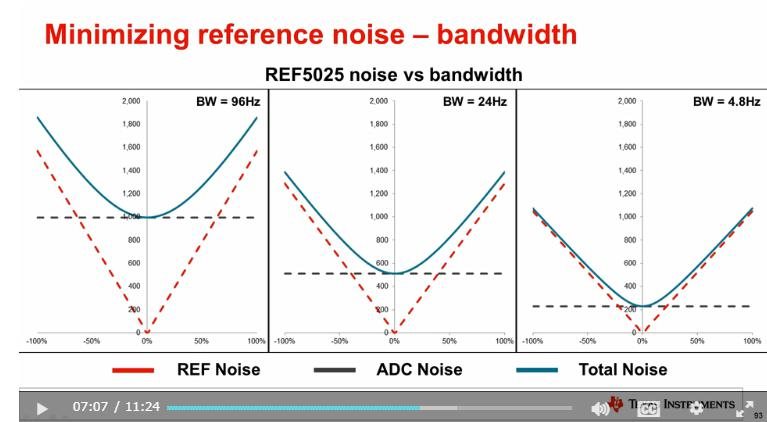Other Parts Discussed in Thread: ADS1259
Hi,
I apologize that this topic is not related with the REF6025 directly.
Please move to proper forum if this forum is inappropriate.
I watched the delta sigma-voltage reference training video below URL.
Below slide is shown from about 4:30.
Why is Ref Noise proportional to Full-Scale Range Utilization?
I'm thinking that Ref noise is constant regardless of input signal.
Best Regards,
Kuramochi




